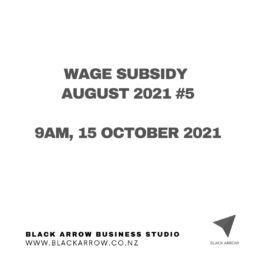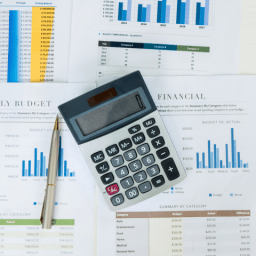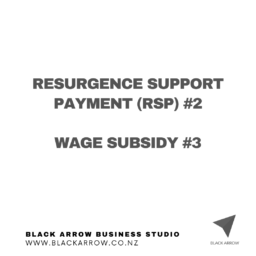Income tax and provisional tax
Income tax and provisional tax are required payments for those who are self-employed or own a business. Provisional tax is a payment method where income tax is paid in a single lump sum or multiple instalments. Additionally, contractors may have taxes withheld from their earnings.
If the Inland Revenue instructs you to pay provisional tax, it is advisable to reserve funds specifically for this purpose.
The initial payment for this tax may be due shortly after you have submitted your tax return for the prior financial year.
To avoid cash flow problems in the second year of your business, it is advisable to begin setting aside funds for your tax bill as soon as income starts flowing in. This is especially crucial since you may need to pay provisional tax for the second year as well as the first year’s tax bill. However, if you utilise the Accounting Income Method (AIM) for provisional tax, you can avoid this issue by making more frequent and smaller provisional tax payments from the start of your business.
The deadline for filing your return for the year ending 31 March is typically 7 July, unless you have requested an extension or utilised the services of an accountant or tax agent, who may be granted an extended deadline.
Once you have calculated your tax liability, the initial payment for your tax bill for the year ending 31 March is due by 7 February of the following calendar year. If you have an accountant or tax agent, this due date may be extended to 7 April.
Formerly known as withholding tax, schedular payments refer to taxes that may be deducted from your pay at the source, similar to pay as you earn (PAYE).
- A contractor hired and paid through a recruiter or other labour-hire business
- Self-employed contractor previously under schedular payment rules
- Seasonal and temporary worker
- Company in the horticultural, agricultural, and vinicultural industries
If the payer agrees, other contractors can also opt to have tax deducted.
All contractors can select the rate at which tax is deducted. To do this, complete the new tax rate notification form (IR330C). You can pick any rate from 10% up to 100% for a tax deduction if you are a New Zealand tax resident.
Tax rate notification for contractors form (IR330C) — Inland Revenue
-
ACC earners levy
-
Student loan repayments
Filing your return
- If you operate as a sole trader, you must file an individual income return (IR3)
- If your business is a partnership, each partner must submit an individual IR3 return, and the partnership must file a partnership income tax return (IR7)
- If your business is registered as a company, you must file a company’s income tax return (IR4)
In addition to your tax return, you must include either a copy of your business’s financial records or a form summarising your income and expenses (IR10).
To file your returns, you can either submit them online or download the necessary forms from the Inland Revenue website.
Forms and guides — Inland Revenue
In case you’re unable to pay your tax bill in full and on time, contact Inland Revenue to explore potential support options. Failing to pay may result in interest and penalties being imposed.
In your tax return, be sure to list the total amounts for each type of business expense you have incurred. It is not necessary to submit receipts to Inland Revenue unless they specifically request them, but you must retain them for a minimum of seven years.
If you purchase assets for your business that cost over $1,000 and have a lifespan of at least 12 months, depreciation allows you to recoup some of the costs. It is similar to claiming expenses, but instead of claiming the entire cost of the item, you claim the amount it depreciates each year. This refers to the value lost due to wear and tear or becoming outdated.
Depreciation — Inland Revenue.
YEAR-End Income Tax
If your income tax liability is less than $5,000, you are only required to make a single payment at the end of the tax year, and you are not obligated to pay provisional tax.
It’s worth noting that “residual income tax” is simply another term for the amount of tax you owe.
If your income tax liability exceeds $5,000, also known as residual income tax or RIT, you must pay provisional tax in instalments throughout the following tax year, in addition to the tax owed from the previous year.
- AIM, or the accounting income method, is an option that employs accounting software. It enables you to make smaller and more frequent payments based on your current year’s cash flow. Your accounting software performs all calculations for you while calculating your GST.
- Standard, or the default method, entails paying the tax owed from the previous year plus 5% or the tax owed two years ago plus 10%.
- Estimation entails predicting your tax bill for the year, which can be a viable choice if your income is expected to be lower than the previous year.
- Ratio is calculated as a percentage of your GST return, and it can be a practical option if your income fluctuates significantly.
If you opt for AIM, your provisional tax payment deadlines will correspond to your GST due dates, either monthly or two-monthly. If you choose the standard or estimation option, you will typically pay provisional tax in three instalments, due in August, January, and May. If you file your GST return every six months, you will make two provisional tax payments in October and May. In contrast, if you go for the ratio option, you will need to make six provisional tax payments.
When you file your income tax return and determine your tax liability for the year, you subtract the provisional tax payments you have already made. If the amount of provisional tax paid exceeds your RIT, you will be eligible for a refund and may also receive interest on the difference. In some circumstances, if your provisional tax payments are less than your RIT, Inland Revenue may charge interest on the amount due and a penalty.
Provisional tax guide— Inland Revenue
Due dates and payments
- Submit your return by July 7th.
- Pay your residual income tax bill by February 7th of the following year.
- If you use AIM, pay your provisional tax when prompted by your accounting software.
- If you’re using the standard, estimation, or ratio options for provisional tax, pay your instalments on the dates specified by Inland Revenue.
- If you anticipate difficulty meeting any of these due dates, contact Inland Revenue well in advance.
- Confirm with your agent when they require all your tax information.
- Pay your residual income tax bill by 7 April of the following year.
- Pay your AIM provisional tax when your software prompts you to do so if you are using AIM.
- Pay your provisional tax instalments on the dates confirmed by your tax agent or Inland Revenue, if you’re using one of the other three options.
Remember, “Residual income tax” (RIT) is another term for the tax to pay.
Provisional tax payment dates — Inland Revenue
Making payments
- online via internet banking
- online via credit card (a service fee applies).
Make a tax payment — Inland Revenue
To ensure you stay on track with your income tax, steer clear of these common pitfalls:
- Neglecting to set aside money for your tax bill can result in an unexpectedly large bill that you can’t afford to pay.
- Failing to file or pay your tax on time can lead to penalties for late filing and interest on overdue payments.
- Neglecting to keep records of your income or expenses, or not retaining them for the required duration. It is a legal requirement.
- Calculating schedular payments on the amount after GST, not before.
If you need help, contact us.















